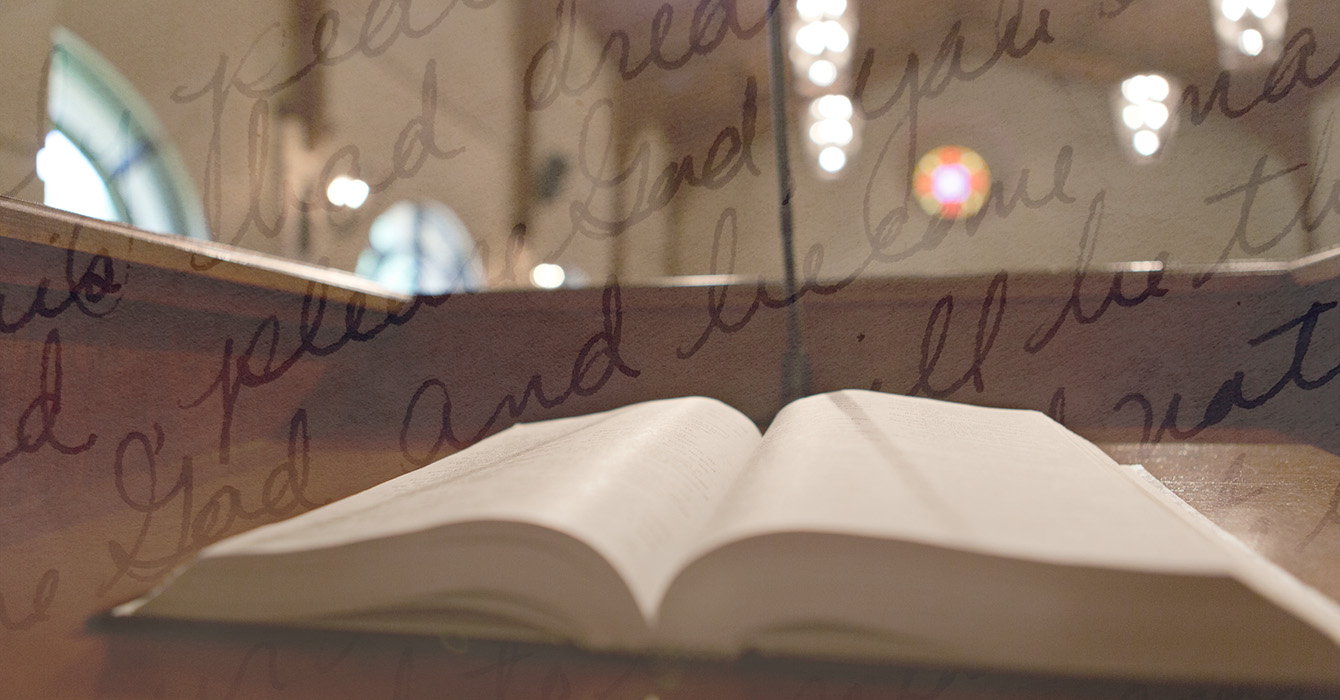As a United Methodist pastor, I serve in a denomination that tends to downplay more liturgical forms of worship. Readings from the lectionary, weekly Eucharist and other rites and rituals handed down to the church just aren’t regarded as very important by many United Methodists. We tend to like our worship casual.
The ancient church, however, tells me that how we worship is important. Liturgy matters. As the ancient church put it, “lex orandi, lex credendi, lex vivendi” -- the law of prayer is the law of belief is the law of life. In other words, the way we pray forms the way we believe, which forms the way we live.
Pray, believe, live.
If we want the church to live a particular way, we must begin with our worshipping life together. The practices we embody in worship do something to us and in us.
When I became pastor at Shady Grove UMC in Providence, North Carolina, in 2012, while still a student at Duke Divinity School, it would have been easy to just accept the congregation’s understanding of their church and its worship life. As the “Grovers” explained to me when I arrived, “We’re just a little old country church.”
Best I could tell, worship at Shady Grove was basically indistinguishable from that of many other rural Protestant congregations. A typical Sunday morning went like this: share a welcome and announcements, sing some old-time favorites, take an offering, read a Scripture, hear some preaching, and go home, hopefully with the sermon on your mind. And on the first Sunday of the month, add communion into the mix.
But I suggested that maybe we could change the worship a bit. How about having communion more often? Or how about reading each week from the Gospel and both the Old and New Testaments? The Grovers were polite but far from enthusiastic.
“Well, we can’t do that here,” some told me.
“If we took communion more frequently, it would lose its meaning,” others said.
The conventional wisdom from throughout the denomination and the academy rang in my ears. All divinity students and pastors have heard it:
“Don’t change anything for at least a year.”
“They don’t want any of that liturgy stuff.”
“Don’t waste all your energy as a student pastor. Really, you’re more like a chaplain.”
Throughout United Methodism (and perhaps several other Protestant denominations), people somehow believe that liturgical worship was tried and rejected long ago. Instead, the story goes, congregants simply “want to love Jesus.”
But I found a different reality at Shady Grove. No, people there did not know much about the rituals and traditions of the church -- but nobody had ever taught them. I soon discovered that when I taught about the liturgical traditions and conveyed the joy that they evoke in me, the Grovers were willing to give them a try. More than that, they were grateful.
From the outset, I was clear with church members that these patterns of worship were not my personal preferences but ancient gifts. So from my very first service at Shady Grove, we followed the ancient fivefold pattern of worship:
- We gathered to pray and sing.
- We proclaimed the Word, reading from the Old Testament, praying a Psalm, reading from the New Testament and reading the Gospel from the middle of the sanctuary.
- We responded to the Word by remembering our baptism as we confessed the Apostles’ Creed, made prayers of intercession and presented our offerings.
- We communed at the Table.
- We were sent out to embody the liturgy in our community.
The first month, I rearranged the altar furniture. I know. New pastors aren’t supposed to do that. But Shady Grove taught me that if you explain why something matters -- in this case, why the altar should take the most prominent place in our sanctuary -- then people will understand and be supportive. Or at least they’ll go along.
After finding the baptismal font stored in the tiny church library, I uncovered it, dragged it into the sanctuary and filled it with water. Every Sunday for the first month, people asked me, “Preacher, do we have a baptism today?”
No, we didn’t. But the baptismal font is a part of our worship, I explained, a reminder of our own baptisms.
Eventually, we also began celebrating the Eucharist more frequently. Most members had never had communion every Sunday, and more than a few thought my proposal was ministerial malpractice. But that first year, we prepared the congregation by first giving everyone a small taste, offering communion several consecutive Sundays during Advent, Christmas and Epiphany.
It was a long enough run that by the Sunday after Epiphany, people noticed the absence of communion. Some even missed it.
In fact, weekly communion had so enhanced our worship that by the end of Lent, we were ready to try it again.
“Starting this Easter, we’re going to celebrate Easter by communing every week,” I announced.
After those eight weeks, we never stopped. Communion became a vital part of worship at Shady Grove.
Every Sunday, we invited the children to line up first to receive the body and blood. Many asked to stand around the Table with me during the Prayer of Great Thanksgiving. My answer was always yes.
One Sunday, a woman told me that her granddaughter had been playing at her house a few days earlier and had said, “C’mon, grandma, let’s play church.”
Picking up a Bible and holding it high over her head, the child processed down her grandmother’s hallway and to the kitchen table, where she prayed the Great Thanksgiving over bread and juice, completely by memory.
Where did the child learn all that? Were the prayers and communion ritual “rote” or “meaningless” to her? Obviously not. The liturgy had shaped her imagination.
From that first Sunday, I also took communion to our homebound members, accompanied by one of our most revered congregants. The homebound members loved it.
“Preacher, I like when you come to visit,” one told me after several weeks. “You don’t come to talk; you come to bring me something I can’t get on my own. Thank you.”
Not everyone was convinced. One Sunday, a man stopped after worship to tell me we were communing too much.
Later, I visited him at his home to talk about it, listen and share. Mostly, though, we talked about his spouse, who had died. Although he didn’t change his mind about communion, he supported me, because I had come to his home, talked with him and listened to him.
Pray, believe, live does not guarantee a more faithful church. Worshippers can resist and even refuse the formation of the liturgy.
Yet something happens when a congregation begins to embody liturgical practices that have sustained the church for over 2,000 years.
At Shady Grove, traditional liturgy helped us experience the living God -- Father, Son and Holy Spirit -- in ways we had not before. It softened our hearts, expanded our concern for others and transformed scarcity into abundance right before our eyes.
We had no master plan or deep strategy. We prayed in ancient patterns. We believed that the living God was in our midst. And we lived as if we had to keep up with what this God was doing, in and through our parish.













